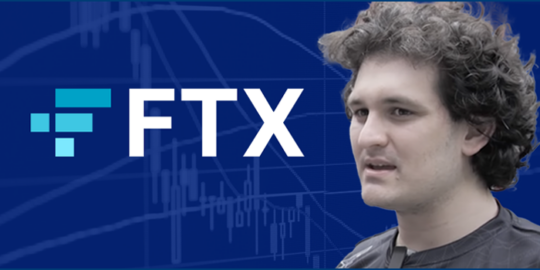If you’re like most investors… when you read the word “stablecoin,” your eyes start to glaze over.
And for good reason… Stablecoins are boring—as they should be.
Stability and excitement don’t often go hand in hand.
But bear with me… Because stablecoins actually serve a critical role in the crypto ecosystem.
And they can be a lot more dramatic than you might think…
Let’s start with a quick overview of stablecoins:
A stablecoin is a cryptocurrency backed by a hard asset—in many cases, a fiat currency like the U.S. dollar—at a ratio of 1:1.
That means one stablecoin backed by the U.S. dollar should always be worth exactly $1. It also means that for every stablecoin created, there needs to be $1 worth of reserves to support the value. The issuing company is responsible for maintaining the assets backing its stablecoin.
What’s the purpose of a stablecoin? To bring—you guessed it—stability to the volatile crypto market.
Bitcoin often moves 10% in a single day… and other cryptocurrencies have even bigger price swings. But because stablecoins are tied to a hard asset, their value holds steady.
This makes stablecoins faster and cheaper to transfer than standard cryptocurrencies…
You see, not all crypto exchanges allow you to trade the same kind of crypto. That means crypto investors often need to transfer funds across platforms in order to trade the cryptos of their choice. Settlement times and transaction fees can vary greatly.
Just like a “regular” currency, a stablecoin acts as a transaction medium for exchanging two different assets (in this case, two different cryptocurrencies). This stable “middle” asset is especially important in the crypto market, where coin prices can change dramatically.
And sometimes, a stablecoin is the only choice, since many crypto exchanges don’t accept fiat currency.
Put simply, stablecoins are digital cash moving around… just like in our traditional banking system. They play an important role in helping the crypto market function properly by making it easier to exchange one crypto for another.
Some of the top stablecoins include USD Coin (USDC), DAI (DAI), Binance USD (BUSD), Paxos Standard (PAX), and Tether (USDT)—which we’ll discuss in a moment.
Not as boring as you thought…
You might have noticed some dramatic headlines surrounding stablecoins lately…
Let’s use Tether (USDT) as an example…
Tether is the largest stablecoin and third-largest cryptocurrency, overall, with a market cap over $60 billion. It was created in 2014 and claims to be backed by U.S. dollars on a 1:1 ratio.
I use the word “claim” because a lot of skeptics (and past shady behavior by management) have cast doubt on whether Tether is fully backed by U.S. dollars.
This week, Bloomberg broke the news that Tether executives may face criminal charges as the Department of Justice (DOJ) probes whether it committed bank fraud. The investigation focuses on the early days of Tether and whether it lied to its banking partners about transactions.
In February, Tether settled charges from the New York Attorney General’s office, paying a fine of $18.5 million while admitting no wrongdoing. The Attorney General says the company didn’t inform clients that, during certain periods of time, Tether wasn’t fully backed by U.S. dollars.
Some reports claim Tether is used in about half of all bitcoin trading volumes. And if it’s not backed by U.S. dollars, then it could cause a lot of volatility (and losses) if too many investors try to sell it for dollars… creating a classic “bank run” situation.
U.S. Treasury Secretary Janet Yellen is calling for regulatory clarity around stablecoins… and asking for regulators to act quickly. We’ll learn more over the next few months as the U.S. government focuses on the space.
What should investors take away from all this?
Stablecoins serve an important purpose in the crypto market. But they can’t maintain their value if investors don’t have confidence in them. There needs to be a way to make sure the stablecoins are backed by actual reserves.
Regulators are asking for a few clear guidelines on how often stablecoin issuers need to disclose their reserves. Then investors can review the public info… and use whatever stablecoin they prefer.
Unfortunately, regulations are a slow, drawn-out process in most cases. So be prepared to see more headlines—and drama—around stablecoins for the next year or so.
But stricter regulations on stablecoins are just another step towards a mature, healthy crypto market. Long-term, the crypto industry will remain the biggest disruptive force in the global financial system.
Daniel Creech is a Curzio Research analyst with over a
decade of experience. He writes on macro trends, large- and small-cap stocks, and
digital securities. He’s a regular contributor to Token Tracker, Curzio Research Advisory, and The Dollar Stock Club.
P.S. Tomorrow on Wall Street Unplugged, Luke will join Frank and me to discuss his proprietary strategy to find tomorrow’s biggest winners.
Then, on Thursday, members of The Dollar Stock Club will get one of Luke’s favorite growth stock buys delivered straight to their inbox.
For only $4 a month, you can be one of the first to access this stock—and countless others from Frank’s Rolodex of insiders.
Daniel Creech is a Curzio Research analyst with over a
decade of experience. He writes on macro trends, large- and small-cap stocks, and
digital securities. He’s a regular contributor to Token Tracker, Curzio Research Advisory, and The Dollar Stock Club.










If you’re like most investors… when you read the word “stablecoin,” your eyes start to glaze over.
And for good reason… Stablecoins are boring—as they should be.
Stability and excitement don’t often go hand in hand.
But bear with me… Because stablecoins actually serve a critical role in the crypto ecosystem.
And they can be a lot more dramatic than you might think…
Let’s start with a quick overview of stablecoins:
A stablecoin is a cryptocurrency backed by a hard asset—in many cases, a fiat currency like the U.S. dollar—at a ratio of 1:1.
That means one stablecoin backed by the U.S. dollar should always be worth exactly $1. It also means that for every stablecoin created, there needs to be $1 worth of reserves to support the value. The issuing company is responsible for maintaining the assets backing its stablecoin.
What’s the purpose of a stablecoin? To bring—you guessed it—stability to the volatile crypto market.
Bitcoin often moves 10% in a single day… and other cryptocurrencies have even bigger price swings. But because stablecoins are tied to a hard asset, their value holds steady.
This makes stablecoins faster and cheaper to transfer than standard cryptocurrencies…
You see, not all crypto exchanges allow you to trade the same kind of crypto. That means crypto investors often need to transfer funds across platforms in order to trade the cryptos of their choice. Settlement times and transaction fees can vary greatly.
Just like a “regular” currency, a stablecoin acts as a transaction medium for exchanging two different assets (in this case, two different cryptocurrencies). This stable “middle” asset is especially important in the crypto market, where coin prices can change dramatically.
And sometimes, a stablecoin is the only choice, since many crypto exchanges don’t accept fiat currency.
Put simply, stablecoins are digital cash moving around… just like in our traditional banking system. They play an important role in helping the crypto market function properly by making it easier to exchange one crypto for another.
Some of the top stablecoins include USD Coin (USDC), DAI (DAI), Binance USD (BUSD), Paxos Standard (PAX), and Tether (USDT)—which we’ll discuss in a moment.
Not as boring as you thought…
You might have noticed some dramatic headlines surrounding stablecoins lately…
Let’s use Tether (USDT) as an example…
Tether is the largest stablecoin and third-largest cryptocurrency, overall, with a market cap over $60 billion. It was created in 2014 and claims to be backed by U.S. dollars on a 1:1 ratio.
I use the word “claim” because a lot of skeptics (and past shady behavior by management) have cast doubt on whether Tether is fully backed by U.S. dollars.
This week, Bloomberg broke the news that Tether executives may face criminal charges as the Department of Justice (DOJ) probes whether it committed bank fraud. The investigation focuses on the early days of Tether and whether it lied to its banking partners about transactions.
In February, Tether settled charges from the New York Attorney General’s office, paying a fine of $18.5 million while admitting no wrongdoing. The Attorney General says the company didn’t inform clients that, during certain periods of time, Tether wasn’t fully backed by U.S. dollars.
Some reports claim Tether is used in about half of all bitcoin trading volumes. And if it’s not backed by U.S. dollars, then it could cause a lot of volatility (and losses) if too many investors try to sell it for dollars… creating a classic “bank run” situation.
U.S. Treasury Secretary Janet Yellen is calling for regulatory clarity around stablecoins… and asking for regulators to act quickly. We’ll learn more over the next few months as the U.S. government focuses on the space.
What should investors take away from all this?
Stablecoins serve an important purpose in the crypto market. But they can’t maintain their value if investors don’t have confidence in them. There needs to be a way to make sure the stablecoins are backed by actual reserves.
Regulators are asking for a few clear guidelines on how often stablecoin issuers need to disclose their reserves. Then investors can review the public info… and use whatever stablecoin they prefer.
Unfortunately, regulations are a slow, drawn-out process in most cases. So be prepared to see more headlines—and drama—around stablecoins for the next year or so.
But stricter regulations on stablecoins are just another step towards a mature, healthy crypto market. Long-term, the crypto industry will remain the biggest disruptive force in the global financial system.
P.S. Tomorrow on Wall Street Unplugged, Luke will join Frank and me to discuss his proprietary strategy to find tomorrow’s biggest winners.
Then, on Thursday, members of The Dollar Stock Club will get one of Luke’s favorite growth stock buys delivered straight to their inbox.
For only $4 a month, you can be one of the first to access this stock—and countless others from Frank’s Rolodex of insiders.